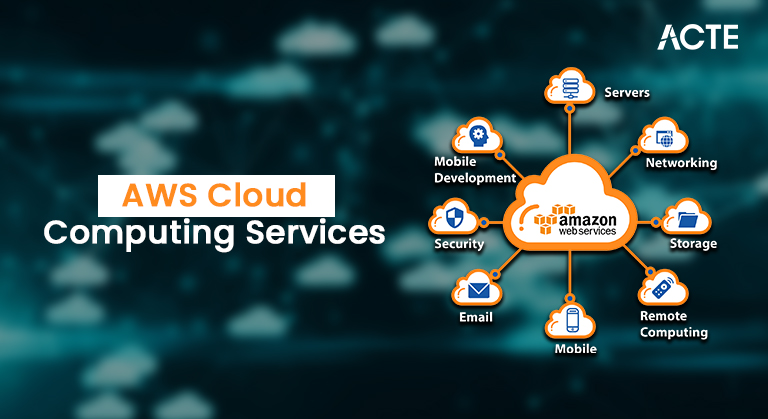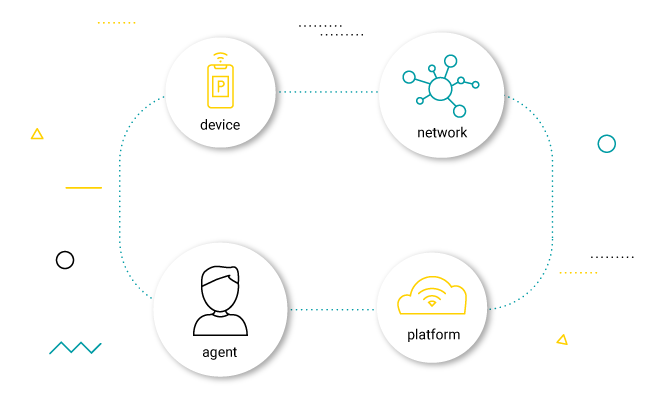
- Introduction to IoT Standardization
- Challenges of a Fragmented IoT Ecosystem
- Importance of Interoperability in IoT
- Major IoT Standardization Bodies
- Common IoT Protocols and Standards
- Security Standards for IoT Devices
- Future Trends in IoT Standardization
- Conclusion
Excited to Obtaining Your Cloud Computing Certificate? View The Cloud Computing Course Offered By ACTE Right Now!
Introduction to IoT Standardization
The Internet of Things (IoT) refers to the interconnection of everyday objects through the Internet, enabling them to send and receive data. IoT transforms numerous industries, from smart home devices to industrial machinery, by providing real-time data and automation. However, the rapid growth and diversification of IoT devices, platforms, and applications have led to a fragmented ecosystem, which has posed significant challenges in terms of standardization. IoT standardization creates common technical and operational frameworks that enable IoT devices, systems, and applications to work together seamlessly. As IoT becomes an integral part of daily life and critical industries, standardization is crucial to ensure devices can communicate effectively, security is maintained, and data privacy is respected—a focus area often emphasized in a Cloud Computing course. Standardization addresses device interoperability, data exchange, security, privacy, and scalability issues. By establishing globally accepted norms and protocols, IoT standardization helps create a more robust, secure, and efficient IoT ecosystem. Various organizations are driving this process, each working to establish standards that enable devices to communicate efficiently across different environments and industries.
Ready to Earn Your Cloud Computing Certificate? View The Cloud Computing Course Offered By ACTE Right Now!
Challenges of a Fragmented IoT Ecosystem
The IoT ecosystem is highly fragmented, consisting of various devices, platforms, manufacturers, and communication protocols. This fragmentation introduces several challenges:
- Interoperability Issues: IoT devices often operate using different protocols and technologies, making it difficult for them to communicate with one another or be integrated into larger systems. This lack of interoperability creates inefficiencies and reduces the value of IoT systems.
- Lack of Common Frameworks: The absence of standardized communication frameworks results in incompatibilities between devices, networks, and applications. This can lead to frustration and additional costs for businesses and consumers as they must navigate a maze of proprietary solutions.
- Complexity in Scaling: As Internet of Things Applications scale, maintaining and managing diverse devices becomes more challenging. Scaling IoT solutions across different environments or regions requires significant customization and effort without a standardized approach.
- Security Risks: The diversity of IoT devices means that each device may have its own security measures or lack thereof. Without uniform security standards, IoT systems can become vulnerable to attacks, leading to data breaches or other cyber threats.
- Data Fragmentation: IoT devices often store and manage data in various formats, making it difficult to aggregate, analyze, and utilize data across devices and systems effectively.
Standardizing IoT technologies can alleviate these challenges, foster greater collaboration, reduce complexity, and enable the seamless integration of IoT devices into larger systems.

Importance of Interoperability in IoT
Interoperability is one of the most critical aspects of IoT standardization. It refers to the ability of different IoT devices, systems, and platforms to work together seamlessly. The importance of interoperability in IoT cannot be overstated:
- Enhanced Efficiency: To achieve the desired outcomes, devices from different manufacturers operating on different platforms must communicate effectively. Interoperability ensures data flows freely between devices, improving system efficiency and optimizing processes.
- Scalability: Interoperable Top most IoT Applications devices allow businesses and users to scale systems without worrying about compatibility issues. New devices can be integrated into existing ecosystems with minimal effort, making it easier to expand IoT networks.
- Cost Savings: Standardized and interoperable systems reduce the need for custom integration solutions, which can be expensive and time-consuming. As devices and platforms communicate seamlessly, businesses can save on both operational and maintenance costs.
- Improved User Experience: Interoperability ensures that IoT devices from different manufacturers can be controlled and monitored via a single platform, making the user experience smoother and more convenient.
- Ecosystem Growth: The more interoperable IoT devices are, the faster the ecosystem will grow. Standardization enables device manufacturers, software developers, and service providers to create complementary products that work together, expanding the possibilities for IoT applications.
Without interoperability, the IoT ecosystem would remain fragmented and inefficient, limiting the potential of IoT technologies.
Major IoT Standardization Bodies
Several organizations and standardization bodies are working toward creating a universal framework for IoT devices, protocols, and systems. These organizations aim to develop standards that address interoperability, security, privacy, and scalability concerns. Some of the significant IoT standardization bodies include IEEE Institute of Electrical and Electronics Engineers is one of the leading organizations in creating IoT standards, particularly in areas such as communication protocols, security, and the Internet of Things in industrial automation. IETF Internet Engineering Task Force The IETF is responsible for developing and promoting internet standards, including protocols essential for IoT, such as IPv6, CoAP, and MQTT. OneM2M is a global standardization initiative that develops end-to-end solutions for machine-to-machine (M2M) and IoT communication—an important topic often covered in a Cloud Computing Course. It is working to define a universal framework for IoT communications and data management. ETSI European Telecommunications Standards Institute ETSI develops technical standards for information and communication technologies. They play a key role in developing IoT standards, particularly in cellular networks and machine-to-machine communications. ISO/IEC International Organization for Standardization/International Electrotechnical Commission These organizations are responsible for global standards in various areas, including IoT. They focus on developing broad standards covering IoT security, data management, and communication protocols. ITU International Telecommunication Union plays a key role in global telecommunications and IoT standardization. It works on creating international standards for IoT networks, addressing interoperability, security, and network performance.
Common IoT Protocols and Standards
IoT devices rely on various protocols for communication, data exchange, and device control. Some of the most widely used IoT protocols include:
- MQTT (Message Queuing Telemetry Transport) is a lightweight messaging protocol designed for low-bandwidth, high-latency networks, making it ideal for IoT applications. It is widely used in smart home, automotive, and industrial IoT solutions.
- CoAP (Constrained Application Protocol): CoAP is a web transfer protocol optimized for constrained devices with limited processing power or memory. It is used in IoT applications where resource constraints are a significant concern, and plays a crucial role in the Future Scope of IoT Modern World by enabling efficient, lightweight communication between devices in large-scale, connected ecosystems.
- HTTP/HTTPS (HyperText Transfer Protocol): While not specific to IoT, HTTP/HTTPS is used by many IoT devices to send and receive data over the Internet. It is the standard protocol for web services and APIs.
- Zigbee: Zigbee is a low-power, short-range wireless communication protocol used primarily in home automation, intelligent energy, and healthcare IoT applications.
- Z-Wave: Like Zigbee, Z-Wave is a wireless protocol for short-range, low-power communication in smart home devices.
- Bluetooth Low Energy (BLE): BLE is widely used in IoT for short-range communication. It is energy-efficient and is often used in wearables, healthcare devices, and home automation.
- LoRaWAN (Long Range Wide Area Network): LoRaWAN is a protocol for long-range, low-power IoT devices. It is often used for agricultural, environmental monitoring, and innovative city applications.
- 6 LoWPAN: A protocol that enables IPv6 communication over low-power wireless networks, commonly used in IoT devices that require internet connectivity in resource-constrained environments.
- Unified Standards: There is a growing trend toward developing unified standards that can bridge the gaps between different IoT technologies and industries.
- 5G Integration: As 5G networks roll out, new standards will be created to ensure that IoT devices can seamlessly communicate over these high-speed, low-latency networks, paving the way for the Future Scope of Machine Learning and IoT integration, where intelligent devices can analyze data in real-time and make autonomous decisions.
- AI-Driven IoT: The integration of AI into IoT solutions will lead to the development of new standards for machine learning models, predictive analytics, and autonomous devices.
- Sustainability Standards: With a growing focus on sustainability, IoT standards will evolve to include energy efficiency and resource optimization in their design.
Interested in Pursuing Cloud Computing Master’s Program? Enroll For Cloud Computing Master Course Today!
Security Standards for IoT Devices
Preparing for Your Cloud Computing Interview? Check Out Our Blog on Cloud Computing Interview Questions & Answer
Future Trends in IoT Standardization

Conclusion
IoT standardization is essential for ensuring that devices can communicate effectively, securely, and efficiently across various ecosystems and industries. By addressing challenges such as interoperability, security, and data privacy, IoT standards enable a more robust and scalable IoT ecosystem. As the IoT landscape continues to evolve, new protocols, technologies, and standards will emerge, shaping the future of the Internet of Things—topics that are often explored in a Cloud Computing course. IoT standardization is critical for addressing challenges like interoperability and security. Major standardization bodies like IEEE, IETF, and ETSI are driving the development of IoT standards. Communication protocols like MQTT, CoAP, and HTTP play a significant role in enabling IoT devices to connect and interact. AI and edge computing are influencing the next generation of IoT standards, particularly for real-time data processing and smart decision-making.


